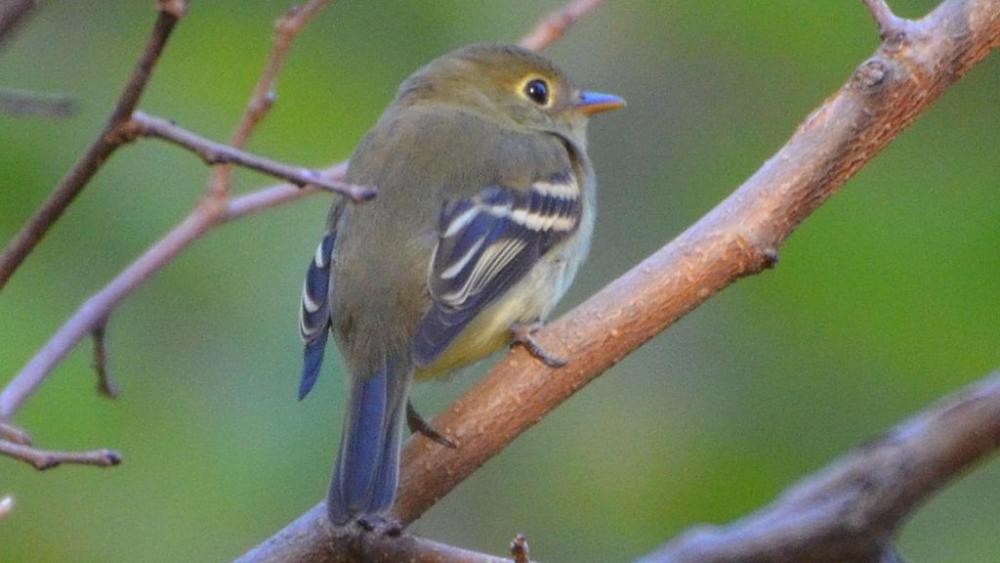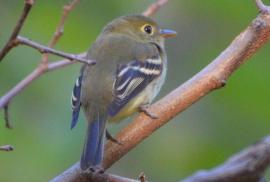Guide to Boreal Birds
Overview
One of the characteristic breeding birds of the Canadian boreal conifer forests and peatlands, the Yellow-bellied Flycatcher nests in cool, moist conifer or mixed forests, bogs, swamps, and muskegs, landscapes that are often flat or poorly drained. Breeding habitat usually well stratified, with open canopy, saplings and seedlings, shrubs, and abundant, thick moss cover. It is one of the continent’s most overlooked birds and one of the last ones discovered here. Furthermore, Yellow-bellied Flycatcher does not linger long on its breeding grounds, arriving in breeding range very late in spring and leaving breeding grounds by mid- to late august. This retiring little flycatcher spends most of its time on migration in dense thickets and so is easily overlooked. With its yellowish throat, underparts, and eye ring, it is the easiest of the eastern Empidonax flycatchers to identify. The association of this species with moss suggests that forest fragmentation that leads to desiccation of ground cover may be detrimental. Acid rain may affect conifer-forest habitat as well.
Description
5 1/2" (14 cm). A very small flycatcher, olive-green above, yellowish below, including throat, with 2 white wing bars and yellowish eye ring. Other flycatchers of genus Empidonax (Acadian, Alder, Willow, and Least) have more whitish throats, underparts, and eye rings.
Voice
On breeding grounds, a flat chilk or killic; also a rising 2-note whistle, per-wee?
Nesting
3 or 4 whitish eggs, with brown spots, in a nest of moss and rootlets on the ground.
Habitat
Bogs and moist thickets in northern coniferous forests; on migration, in second-growth woodlands.
Range/Migration
Breeds from central Canada and Newfoundland south to Great Lakes region, northern New York, northern New England, and Maritime Provinces. Winters from Mexico to Panama.



